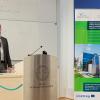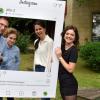Promising Results in Fertility Research
2021
Feb
15
Three hundred thousand Hungarian citizens yet to be born: the National Laboratory of Human Reproduction works to ensure their lives. This institute is part of the network consisting of eighteen National Laboratories, created in September 2020, that have been chosen to represent Hungary’s outstanding research potential. The laboratory operates at the University of Pécs under the supervision of dr. Gábor L. Kovács, member of the Hungarian Academy of Sciences. The research topic and its fields are very diverse. We interviewed the professor aboard the flagship of the university in terms of research, the Szentágothai Research Centre.
Written by: Éva Harka
There has been previous research in this field. What does it mean to be able to reorganize all those to form a National Laboratory?

 It is a great opportunity for us. We have been working together for eight years, which started with two Social Renewal Operational Programmes (TÁMOP) and an Economic Development an Innovation Operational Programme (GINOP) tender. We have been fortunate, because every time we closed a door, another opened, and it has been like that ever since. Alongside this, we are currently running a research programme with a team led by Prof. Bódis and a Hungarian Scientific Research (OTKA) programme led by me.
It is a great opportunity for us. We have been working together for eight years, which started with two Social Renewal Operational Programmes (TÁMOP) and an Economic Development an Innovation Operational Programme (GINOP) tender. We have been fortunate, because every time we closed a door, another opened, and it has been like that ever since. Alongside this, we are currently running a research programme with a team led by Prof. Bódis and a Hungarian Scientific Research (OTKA) programme led by me.
We are trying to approach this topic from as many angles as possible. A hundred researchers from ten institutes at three faculties of the University of Pécs participate in this national laboratory according to a predetermined research plan spanning several years. We are currently working on establishing our network of partners outside of the university, since this is what makes a laboratory national. As far as I can tell, there is one aspect, which differentiates the National Laboratory programme from its predecessors: the fact that our performance is assessed based on innovative and marketable properties. Our scientific work should of course be highly professional, but we are required to showcase the results of our collaboration with our partners in the industrial sector. We have numerous ideas in this regard!
Could you give us a basic outline of the main directions of your research?
We are in an ideal position, since fertility is a question of genetics as well, and Pécs is a place where significant genetic research is conducted. At the Szentágothai Research Centre, an internationally acclaimed and renowned central genetic and genomic laboratory operates under the supervision of Attila Gyenesei with the help of Katalin Gombos’ research team at the Department of Laboratory Medicine.
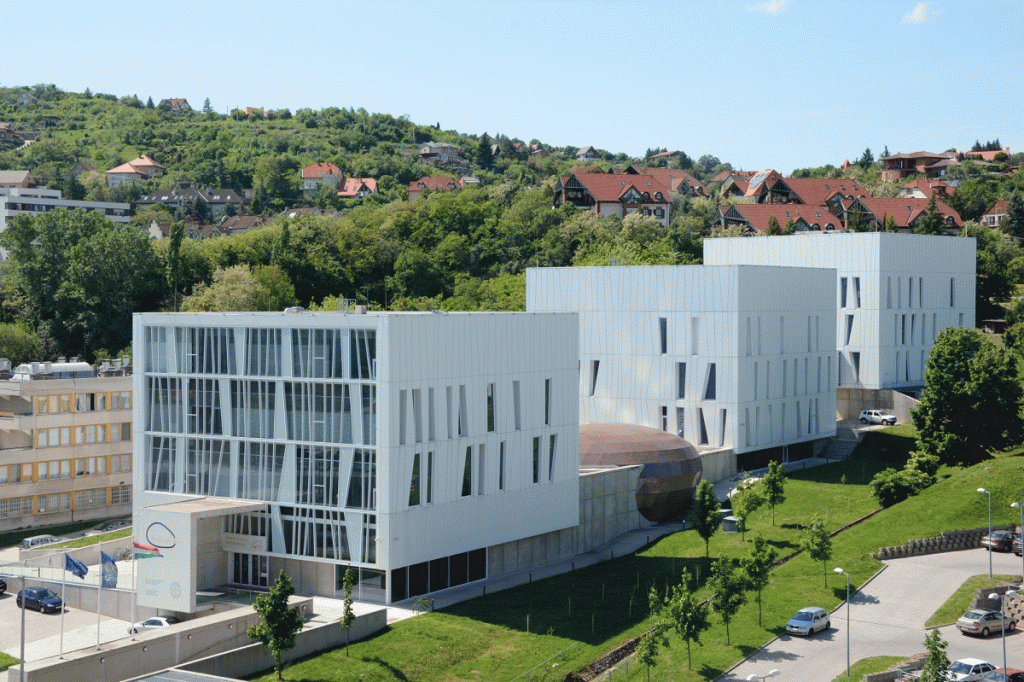
We are searching for answers to questions that had no scientific answers previously. For example, can we estimate, which embryo will be more susceptible to miscarriage in the case of artificial insemination? We want to create new diagnostic algorithms and we are trying to utilize artificial intelligence models combined with mathematical models – however, this is a tremendous task, if we can get it started. This is only one of our directions. Júlia Szekeres and her research team at the Department of Medical Biology have been working on solving this very same problem for years – now as a part of the national laboratory – but with methods different from the one previously mentioned. They have come up with a significant patent in the previous years.
Naturally, the Department of Obstetrics and Gynaecology and because of male-sterility, the Urology Clinic takes on the majority of the clinical questions. The role of the Departments of Internal Medicine is very important, because there are many hormonal disorders that could prevent pregnancies in otherwise healthy reproductive organs. This question has other aspects related to immunology as well. We would like to know, how artificially conceived children develop long term as well, so there are neonatologists and paediatricians working within the programme as well.
We want to establish a national registry for reproduction. As of now,
there are one hundred and fifty thousand couples in Hungary struggling with reproductive difficulties. They would like two children each on average, if it would be possible. That amounts to three hundred thousand unborn Hungarian citizens.
Obviously, not all infertility problems can be treated, and there are problems that can be treated with traditional medication, but there is a segment of people, whom we could help conceive with modern and innovative methods in the future. The most ambitious element of this is that gynaecologists in Pécs, led by Prof. Milós Koppán
endeavour to establish the possibility of womb and ovary transplantation in Hungary.
Imagine a young woman, whose womb would have to be removed due to cancer, and yet thanks to this transplantation, she could bear children. Creating this possibility will take years and it will be difficult. We will need to build a transplantation wing with sterile rooms, sterile food, and sterile environment. This alone requires a tremendous amount of resources. We also need to introduce new operation methods.
How and when can these new methods be realized in practice? Based on what you said so far, I can see how finding a solution to infertility problems are rather pressing.
This programme has been signed for three years, but the Ministry of Innovation and Technology promised to open up new channels for us if we can get started on innovative products and methods and if we can join the structure of European innovation with our breakthroughs. If we can get to a point in our reproduction programme, where we can step our reproduction research up to an international level, we would do so from Pécs, through our HECRIN consortium.
You are the president of the HECRIN consortium as well, what should we know about this organisation?

The Hungarian department (HECRIN) of the European Research Infrastructure Network (ECRIN) was established six years ago. Its aim is to help channel the universities’ innovative clinical research results into the international clinical practices. This is not an easy task. If an idea born in one of our research-laboratories seems feasible, useful and able to gain European backing then
we want to try it out at Hungarian and European clinics.
You highlighted that you are working on being able to determine the most fertile period of the womb more precisely.
If we put the problems of the male population, which are rather significant, and the questions of artificial insemination aside, there are still several possible problems that could occur in the body of the mother to be. The state of the womb’s mucus membrane can be monitored directly, with invasive sampling, or indirectly by measuring hormone levels and tracking of period cycles, these however, might not indicate precisely enough, when the uterus is most fertile. Let me give an example to prove the importance of all of this. Part of the artificial insemination process is carried out immediately, they prepare the mother and as soon as the embryo or embryos are ready, they are imbedded into to her womb. Some embryos can be frozen, thus ensuring safe pregnancy later on, and this way new ovum does not need to be extracted from the mother.
But when should we imbed the embryo into the uterus?
When is that approximately three-hour long period, when successful insemination is most probable? There are many possible ways of determining the optimal timeframe, from looking at the genes to the proteins for example (genetics, proteomics). These are what we want to research with cutting-edge technology, thus increasing the chances of a successful pregnancy.

You also emphasized how the cornerstone of all of this is understanding the communication between the embryo and the mother. What directions do you see in this regard?
Multiple research teams are working on answering this question! The most promising so far is Edina Pandur’s research on signalling molecule systems at the Faculty of Pharmacy. This signalling molecule is the so-called fractalkine. When an embryo enters the uterus, it begins sending signals on a molecular level to the receptive cells –
much like if they were exchanging text messages. If this communication is successful, the embryo can attach to the mucus membrane and it gets accepted by the body.
However, there are many unanswered questions in this field as well.
And the message can influence the embryo’s adherence to the womb?
Yes, I believe so, and we are working on increasing the odds of a successful pregnancy with these messages. I must add that our research is bound by very strict ethical restrictions. We cannot touch the embryo in any way, we can only test its surrounding liquid. It is like if a paediatrician would want to test a child for rubella by looking at its bathwater. There are, however, artificially inseminated animal embryos, which allow for the direct research of the ovum and its communication. We use such methods as well.
We are also planning to use a method that is rarely used in Hungary: we can determine the embryo’s state of health and wellbeing by testing the mothers’ blood. This is less demanding for the embryo and we do not have to take a sample from the amniotic fluid either. Some signalling molecules travel from the foetus into the mother’s bloodstream. The laboratory can measure these molecules and the clinician can understand, whether the foetus is healthy or has some kind of a disease. This makes it possible for us not to use invasive testing methods so as not to disturb the developing life.
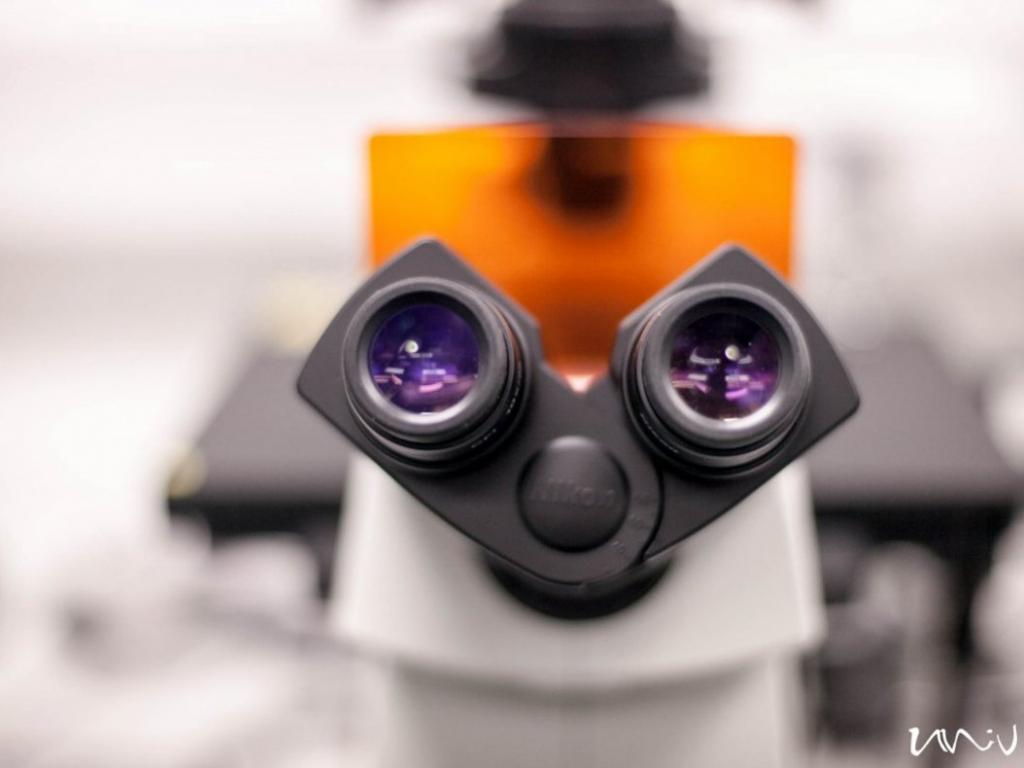
To what extent will the laboratory look into the problems of male infertility?
The Urology Clinic’s programme deals with sperm development or movement problems, and their medicinal treatment and better understanding. There are significant changes worldwide in this field: sadly, the sperm count of today’s young adults is 20-25% of what previous generations could produce. According to some hypotheses, this is due to the rising popularity of warm jeans, although there are many other factors.
You are not serious, are you?
It is not a coincidence that the male testicles are outside a man’s body cavity. Those whose testicles stay within the abdomen and do not descend, cannot produce sperms, because the temperature inside the abdomen is too hot. Let me tell you another reason: people regularly go to saunas. If a male produces less sperms in his young adult years, what will happen in his 30s, 40s or even later, to when more and more people tend to push parenthood. Many women study, build their carrier and only plan on settling down and becoming a mother after they are 35 – by this time their partner is not young either. There are many cases like this.
Along lifestyle, male infertility problems can be the result of inflammatory diseases. In most cases, this can be helped, since the causes are known, and the treatment is available at the urologist. However, there is a limit there as well, because there are some problems we do not yet fully understand, but it is possible that with new and innovative methods, these questions could be solved as well. The Urology Clinic is planning to search for new correlations of sperm composition with molecular imaging, thus exploring the correlations of each clinical disorder.

I know that you have always emphasized creating new methods and equipment that could be used easily in clinical practice. During the laboratory’s opening ceremony, you mentioned that there are six patents pending.
That is right. These are the achievements of the previous period; we will be working towards turning them into products within the system of the National Laboratories.
One of these is detecting a protein fragment from the embryo-breeding liquid, we found that the amount of said protein fragment in the liquid correlates to the survivability of the embryo. This is connected to an Economic Development an Innovation Operational Programme tender, currently we are preparing a chip diagnostic device to be used at maternity wards.
Another patent is based on an interesting idea. They looked at how successful artificial insemination in animals is in natural light compared to artificial red light. As it turns out,
embryos develop twice as well in red light.
Based on this finding, the Department of Obstetrics and Gynaecology developed a patented system under the supervision of prof. József Bódis. What is even more, they reconstructed the whole clinic, and they are working under red lights. As part of the patent, they will manufacture tubes and vessels that filter out white light, thus providing some protection during incubation.
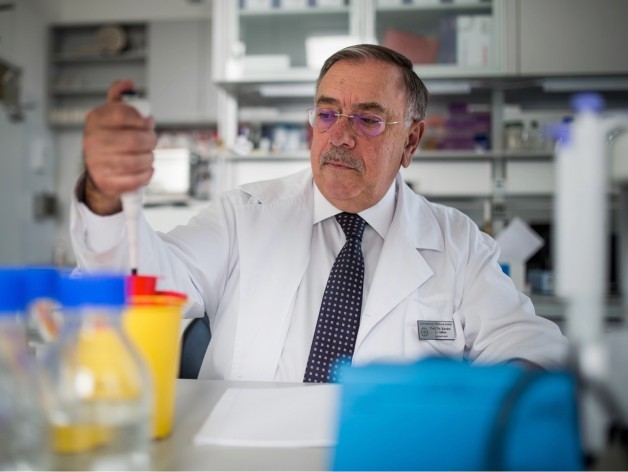
We can determine the embryo’s gender as well from the embryo-breeding liquid without directly contacting the embryo – we have a patent for this as well. Naturally, it is strictly forbidden to select the embryos based on gender and it is not our intent to do so either. However, there are some gender specific genetic diseases in the case of which the clinician must know of this information as soon as possible.
Taking care of these patents is not easy since we have to pay for the protection of these patents and that could amount to multiple millions of forints a year for each patent. The University of Pécs provides significant help for researchers in this respect. A whole separate industry is built with its own specific legal vocabulary on the protection of intellectual property. In my opinion, this world has its own criminals as well. While we were trying to patent our discovery of the protein fragment from the embryo-breeding liquid, we came upon a foreign patent, that was submitted by a “researcher” who does not do research the field of fertility but knows their way around the legal system and who has patented every genetic research concerning embryos a while back. We attacked this patent in front of the European authorities and we won.
The National Laboratory title comes with funds of 2.5 billion forints. It sounds good, but what is it enough for?
When I was informed of the opportunity to apply for the tender, I asked my colleagues invited to the programme to prepare a well-built budget plan. This amounted to 8 billion forints. Compared to this, what we got at the start in order to finance 100 people’s research for 3 years is not that much, if I have to be honest. However, the amount what one can win in other scientific research tenders (e.g. Hungarian Scientific Research Programme) is tremendous. The way I see it, by becoming one of the chosen research groups, we gained a kind of guarantee that the government is paying attention to us – and of course, it is on us to provide the results.
- Log in to post comments
University of Pécs | Chancellery | IT Directorate | Portal group - 2020.
